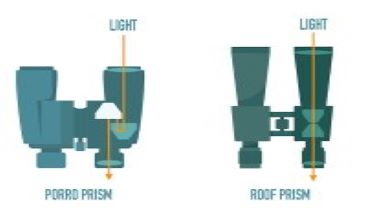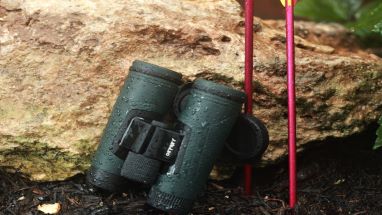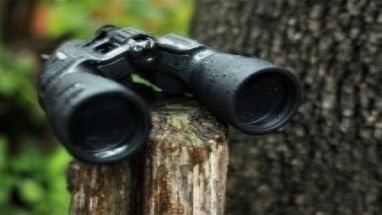Posted by Team Buy Osprey Global on Jan 8th 2021
Osprey Global Binoculars: Best Picks For You
Osprey Global Binoculars Buyers Guide
What Binoculars should you get? It's overwhelming and confusing with all the brands, styles and sizes available so we created a simple four step guide on how to decide on your next binoculars. Ask yourself the following questions and buying some new binoculars should be easy.
- What are you looking at with your binoculars?
- Choose your Binocular budget: How much should you spend on good Binoculars?
- Different binocular style? There are three main Osprey Binoculars. Which is best?
- Size matters: What size binoculars are best and what's the difference?
1. What Are You Looking At? Know What You Are Going To Use Your Osprey Binoculars For And The Battle Is Half Way Won.
Binoculars are used for everything! Don’t believe us? Go to any sporting event, fishing competition or hunting blind. You will find binoculars in the hands of all the serious participants. So when deciding what exact Osprey Global binoculars you need, you first want to decide which activity you are going to be using them for.
Are you using your osprey binoculars for hunting? Then the go to binocular would be Osprey Global Binocular 10x42. If you are going bird watching but want some comfort in your field of view, then many websites and birding professionals suggest eight power binoculars. This means that you can see more of your peripherals making it easier to spot birds as opposed to a narrower field of view which you need more practice finding hidden targets with. The Cornell Lab wrote
Our most popular beginning to intermediate birding binocular is the Osprey Global 8x42 Blue Binoculars for this reason but it may not necessarily be the best option for your needs. There are binoculars for whale watching, hunting, reading the tags on cattle or being nosey from as far away as possible. It will greatly affect your decision depending on Whether you want all rounder binoculars for sporting events to star gazing to vacations and hunting, or some glass for one main activity. Maybe you want something for checking up on the neighbor's and don't mind them being a little bulky as you won't be hiking with them. So before deciding on your Osprey Global binoculars decide on what you are going to use your binoculars for.
2. Choose your Binocular budget: How much should you spend on Binoculars?
There is a slim chance that a pair of one hundred dollar binoculars may be all you need, but many companies will encourage you to spend your mortgage on your next pair. The reality is you need to spend what works for your magnification and quality needs but also for your budget. The ‘dean optics’ website suggest spending between $100 and $500 on binoculars in their recent article on why glass is so expensive. When buying Osprey Global binoculars our price range is between $100 and $300 depending on functions and quality. Our best sellers are the Osprey Global 10x42 binoculars due to the fact that they are in the low 200 price range but offer clarity comparable to binos twice their cost. Set your goals for both finance and performance and if you cannot currently afford what you need we would suggest waiting rather than buying a cheaper set because as the old adage goes
"THE POOR MAN BUYS TWICE"
This is doubly true of binoculars. Think about it, you spend a hundred dollars on a set of binoculars and you find them lacking? It frustrates you for a while, costing you in enjoyment until you spend the extra money and get yourself a set for $200. That set has essentially cost you more than $300! Buy what you need and buy it once.
3. Different Binoculars explained: There are three main Osprey Binoculars. Which is best?
There are three main styles of binoculars. Each one has its pros and its cons. If you want a more detailed description of each type we found this article by Optic mag useful. It goes beyond the scope of this article into binocular types and consruction. we delve into it briefly here
Traditional style or porro prism Binoculars
Think the ones your dad owned or are sitting in the cupboard as you read this. They are still around because they work well and cover a lot of ground in the binocular world, are affordable and easy to use while not sacrificing much in the way of quality. They are larger than roof prism binoculars like Ospreys 10x42 binoculars due to the fact that they need a larger objective to allow more light in. They need more light to combat the fact that the light doesn't come in a direct line to the eye but rather twists and turns on its path to the eye. The more twists, turns and deviations a light has to take on its transition to the ocular, the more chance it has of having blur and lower light functionality. Osprey Globals 10-22x50 binoculars are a perfect example of a porro prism. These binoculars are jack of all trades but master of none. They have a great magnification and decent light but are a bit too bulky to do serious hike ins or extended active work with.

Roof Prism Style Binoculars
For this style think of your Osprey Binoculars 10x42, 8x32 and 10 x 26 and 8x42. These are usually the fastest and clearest of binoculars. The most popular for people who want a compact set of binoculars without any sacrificing of quality or image clarity. You will see this style in the hands of dedicated hunters and bird watchers. The key to their superior clarity is the fact that the light comes directly to the eye from the objective.
If you look at the above image you can see that as the porro or traditional prism system compared with the roof prism system., In the porro system the light comes in the objective then has to take 2 different turns and detours before reaching the eye. In the roof prism it is the most direct and shorter distance to the eye. The more movement the light makes on its journey to the eye the more chance for reduction in clarity and increase in blur. Anything that gets lost on the way to its destination will end up worse for wear when it gets there and the same is true of light.

Marine Binoculars
Osprey Globals Marine Binoculars come in yellow or blue and are, you guessed it, are popular with people in the marine world. So boaters, fishermen and women, and just about anyone on or near the water. They have a magnification of seven power. This is beneficial to people on, in or around the water because it gives you a larger field of view.
This larger field of view lets you see MORE, so if there is an object on the horizon then you are more likely to see it. These are ideal for staying safe on the water and spotting things like icebergs, in-laws and other leisure ending catastrophes.
The lower magnification is also ideal for viewing from a moving platform. Imagine being on a moving platform like a boat or safari truck and you are trying to steady a 15 power telescopic binocular system. You are probably seasick just thinking about it.
So marine binoculars are ideal for a great field of view and for viewing from moving platforms. You don’t even have to get your feet wet to enjoy the {osprey global 7x50 marine binoculars} The main drawback of the marine binoculars is the fact that you have less magnification and that with the 50mm objective they are quite bulky. Truck, boat and blind binoculars are often marine style due to the reasons mentioned above.
Osprey Global Monoculars

Osprey Global also has 8x42 monoculars. A monocular is a telescopic, single tube magnification viewer. The advantages is that they are cheap, clear, small and fast. Due to the fact that they are only a singular tube it reduces in depth of field and affects the ability to judge distance but they are a great option for general low commitment use.
4. Size matters: What size binoculars are best and what's the difference?
Size matters. Its a fact of life. We need to be honest that size matters, and if you don't believe us ask someone from Texas. Though it's not as simple as ‘bigger is best’ When it comes to purchasing your next pair of Osprey Global Binoculars; you need to consider, as discussed previously, your primary use for your binoculars.
This will help you decide on your best size. If you are trekking long distances and being active in the field you want as small as possible to restrict the weight you will be carrying. If you are after absolute clarity and image performance then you want a roof prism set with as large an objective as you can find like the Osprey global 10x42. If you want to see as far as possible and retain absolute detail then the Osprey Spotting scope 20-60 x80 is the best.
The conundrum arrives when we have to decide what we need the most. Do we need to see the furthest and the clearest or do you need the smallest compact pair possible. The larger the objective the more cumbersome to carry. The higher the magnification the slower it will take to focus but the further you will be able to see once you have focused the binoculars. Ospreys 10x42 binoculars are the most popular by far due to the fact that they can see medium to long distances without adding too much weight and are well priced, fast to acquire your target and extremely clear clarity.
This is a fact of life. You have to prioritize what you need and what you are willing to sacrifice to get it. That isn’t a recent quote from some philosophical, robe wearing leader about to walk you down the path of enlightenment, it's a hard truth. Look at your budget, figure out what's important to you and what you are doing with your binoculars. You will have a very different answer depending on if you are watching football on Sundays or hiking three days to get an elk at 600 yards. Either way Osprey global binoculars, spotting scopes and monocular have every bit of glass you will ever need.

Why Osprey Global Binoculars? Why should you choose osprey global over other brands
There are more binocular brands out there than there are things to hunt, look at or explore. So why is Osprey globals binoculars worth the price tag? Clarity design and general ruggedness is a good answer but we have gone into detail why we think your next set of binoculars should have Osprey Global written on the side of them
- Osprey Globals warranty
Osprey globals warranty {https://buyospreyglobal.com/warranty/}{ is bullet proof. Literally, Check it out. We are hard on our glass and know full well that you are too. Our binocular range has been beat up and dropped by our customers and if you do manage to break it in any way you get a new pair, no questions, asked for life.
2. The glass in osprey binoculars is clear
Clarity is one of the most important values that you can ask for in a set of binoculars. Osprey Globals Binoculars has the multi coated hoya glass that encourages maximum light transition. They compare directly to glass twice the price. You cannot fake that kind of clarity; it is just high quality glass teamed up with great design.
3. Osprey Globals Binoculars: Value for money
Yes, yes and yes. The value for money is the pinnacle of Ospreys binoculars. The clarity for price is simply unbeatable. Yes you can find cheaper and yes you can find slightly clearer. You probably don’t want to even look through anything in the cheaper pricepoints and most do not want to spend the money for a percentage point of light transition.
4. Ospreys Binoculars are durable
Built tough as nails. Drag them to hell and back and you won't stop them brining the clarity. Truly a brand ready to be abused. If you aren't putting your gear through its paces, getting it muddy and adding scratches, are you even hunting?
For direct comparisons of Osprey Globals Binoculars and a more in depth look at our glass check out 10x42 Binoculars, Review And Comparison.

